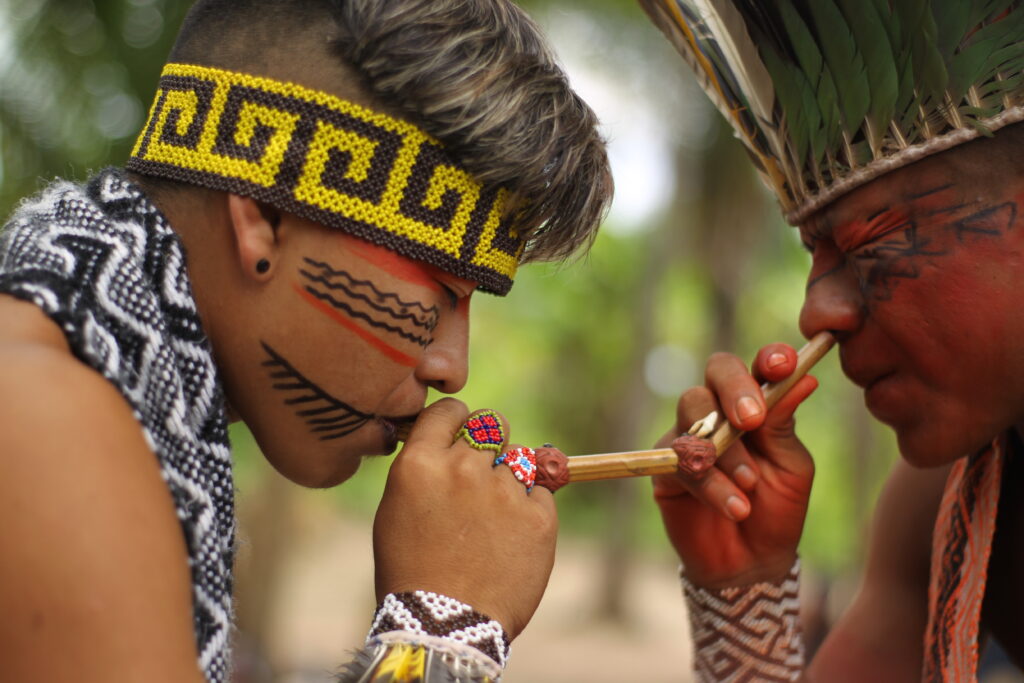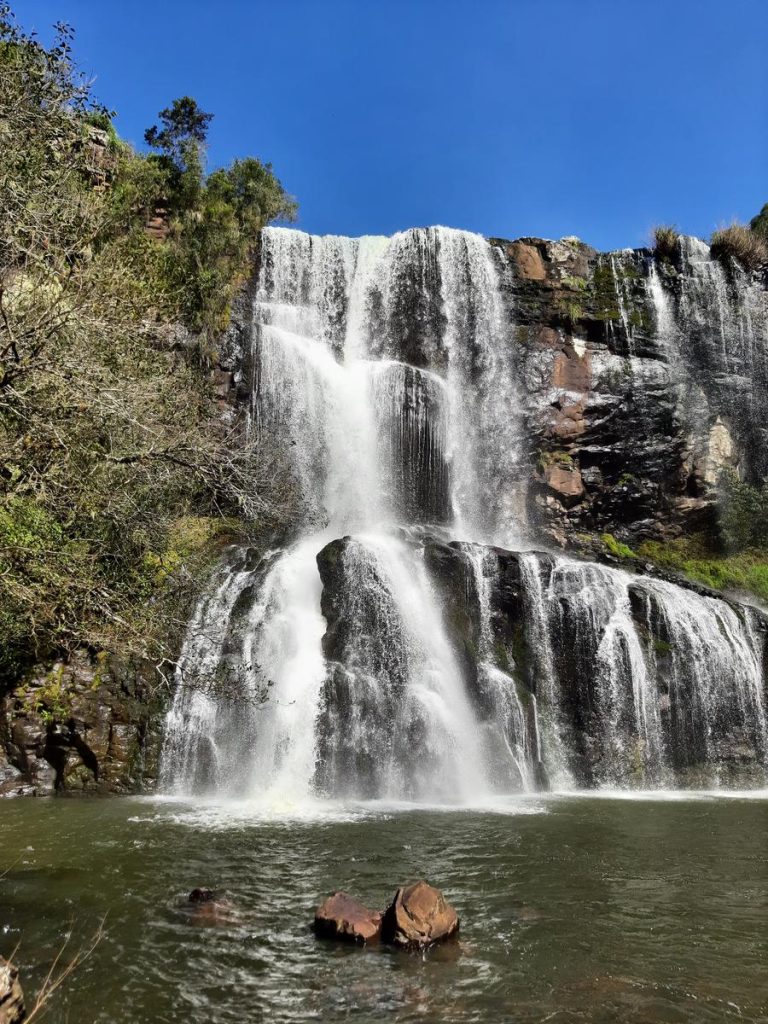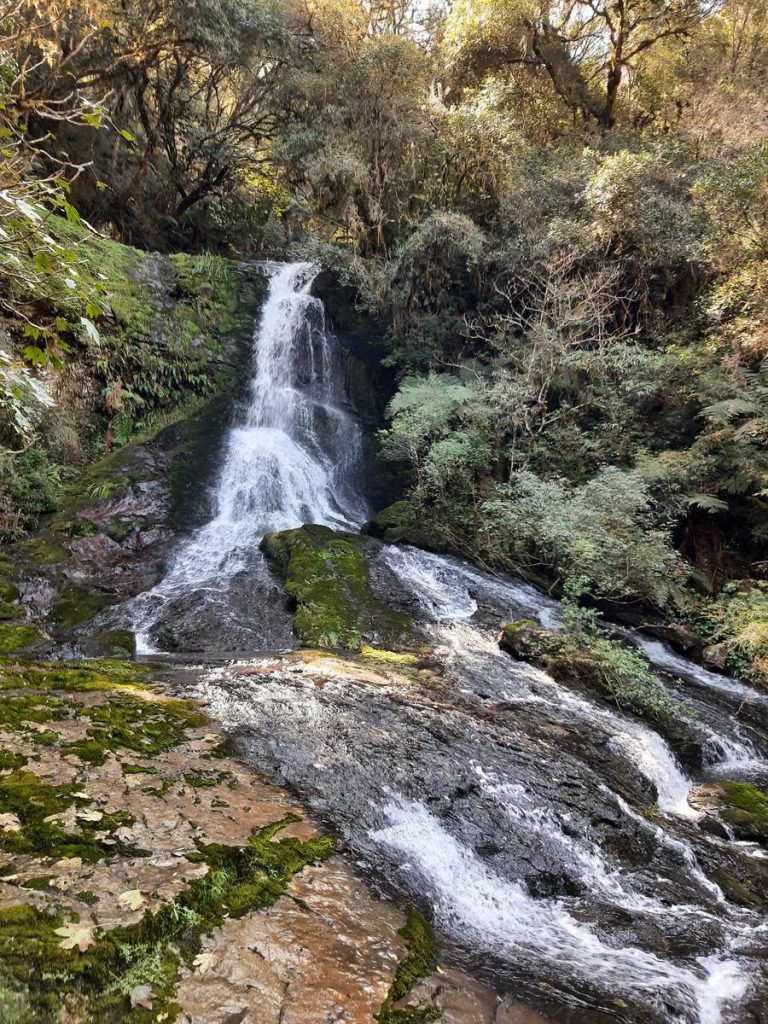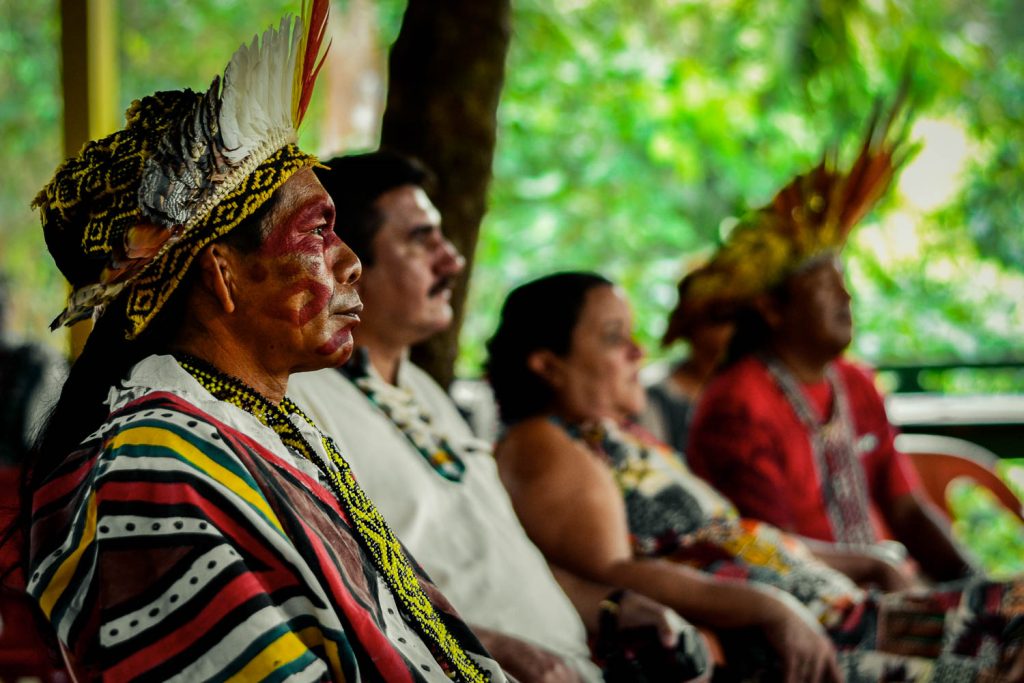Worldview and Shamanism
The Nukini are a highly spiritual people. Like all Amazonian peoples, they have a shaman or “pajé” in charge of the spiritual affairs of their small society. The “pajé” is responsible for preparing medicines and providing them to his people.
As Erison Nukini, one of the spiritual leaders of the Recanto Verde village in the state of Acre, Brazil, tells us: “rapé, paintings, songs, and uni (ayahuasca) are an essential part of my spiritual vision.” This worldview is being reconstructed after having disappeared due to the imposition of the rubber tappers.

Like other Amazonian tribes, the Nukini use rapé almost daily to gain the strength they need for each activity, so there are different types of rapé. Some are rather relaxing, but most tend to be stimulating and stimulating. Rapé is made from tobacco leaves that they plant themselves, mixing them with different medicinal plants from the jungle and crushing them into a powder. This powder is inhaled through a “kuripé,” through which another member of the tribe—preferably the pajé—blows the powder into the nose of the person taking the medicine.
Ayahuasca (which they call “uni”) is another of their main medicines, used in rituals attended by all members of the tribe and, if present, visitors to the village. Thanks to this concoction, the Nukini, like other Amazonian tribes, are able to connect with the jungle, the spirits, the rivers, the trees, and the mountains. This allows them to live in harmony, preserving the forest to ensure the continuity of life for future generations.
Paulo Nukini, chief of the Jaguar people, who has held this leadership position for 20 years, tells us that his grandfather gave him this knowledge when he was still a child, and he taught him about the different experiences, customs, and traditions. He also taught him how to listen to the jungle, how to lead his people toward harmony among themselves and with the land they inhabit.


The Nukini also make beautiful handicrafts with fruits and other natural elements they find in the jungle, creating necklaces, bracelets, and earrings made from seeds, bones, teeth, or animal feathers, as well as skins used to make dresses and hats.
They also make beautiful ceramics, including plates, cups, and pots. They use the ash from the carpio bark to mix with clay. They use other materials to make brooms, baskets, and so on.
Urucum seeds, for example, are used for body painting. They are first crushed with water and then formed into a paste, which is used to decorate the body and also serves as a food coloring. Cipó-titica (Heteropsis flexuosa) is used to make baskets and various ornaments, which are painted with urucum and genipa americana.

Mariri
Regarding rituals, the Nukini currently dance the mariri—as do several Pano peoples in the region—and sing numerous indigenous songs, some composed by themselves and others learned from elders.
